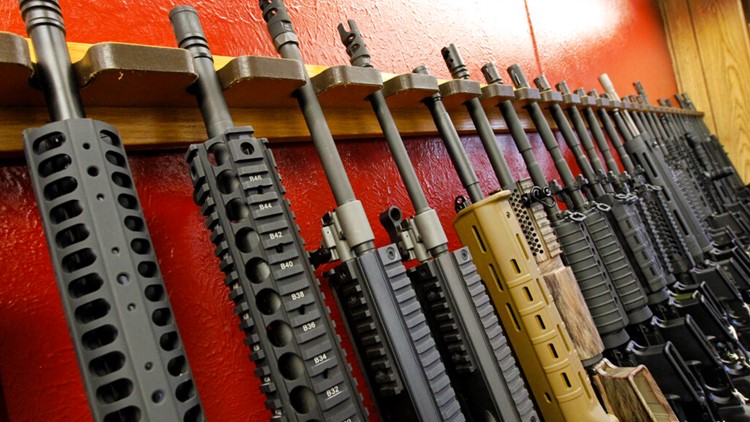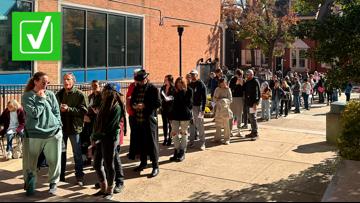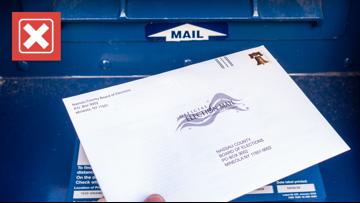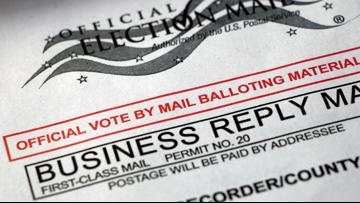On June 25, President Joe Biden signed the Bipartisan Safer Communities Act into law. The legislation provides $300 million for violence response training, imposes enhanced background checks, provides additional funding for the National Criminal Instant Background Check System and closes the “boyfriend loophole.”
The law also provides incentives for states to enact laws that allow authorities to temporarily remove guns from people considered dangerous to themselves or others. Those laws are known as extreme risk protection orders, or red flag laws – named as such to raise red flags or sound the alarm when access to weapons should be restricted.
Google Trends data shows there has recently been an uptick in people searching for what red flag laws are and how they work.
THE SOURCES
- Bipartisan Safer Communities Act (S. 2938)
- The Second Amendment of the U.S. Constitution
- Allison Anderman, senior counsel and director of local policy with Giffords Law Center
- Everytown for Gun Safety, a gun violence prevention group
- Cornell Law School
- U.S. Department of Justice Office of Justice Programs
FAST FACTS
- Red flag laws, known formally as extreme risk protection orders, allow law enforcement and family members to obtain a court order to temporarily remove guns from people considered dangerous to themselves or others.
- There is no national red flag law; each state can enact their own red flag laws. Some states have more comprehensive laws than others.
- Courts have ruled that red flag laws are not a violation of the Second Amendment because most orders are temporary and only apply to individuals restricted from gun ownership in the first place.
What are red flag laws
Red flag laws, known officially as extreme risk protection orders, allow for law enforcement and family members to seek a court order to temporarily remove guns from people considered dangerous to themselves or others.
Across the U.S., the laws vary by state on who could have their guns confiscated, but generally, the following factors are considered:
- Does the person have a substance abuse problem?
- Is the person having a mental health emergency or do they have a history of mental illness?
- Is the person threatening harm to themselves or others?
- Is there evidence the person is a threat to the general public? (i.e. a recent large purchase of weapons or ammunition).
Nineteen states and the District of Columbia have some form of red flag laws. Thirteen of those states allow for friends and family to file a direct petition with the local presiding court, while the others require some form of law enforcement intervention.
There are no national red flag laws.
How obtaining an extreme risk protection order works
To obtain an order, a petitioner, whether it's a law enforcement officer, family member or friend, has to file a petition with the local court. That petition must include evidence – such as proof of threats or harm – that shows why someone should have their weapons and ammunition removed. That petition is heard by a judge, who then decides whether to grant the order.
“It’s very similar to getting a domestic violence restraining order law, although in most cases in most states, it's a higher burden of proof,” Allison Anderman, with Giffords Law Center, said. “There has to be clear and convincing evidence, which is the highest legal standard, that a petitioner would have to prove with evidence that this person poses a serious and credible risk of violence towards themselves or others.”
If the judge decides the person should not have access to guns, he or she would issue a temporary risk protection order that lasts for a set amount of time, usually not more than two weeks. During that time, the person subjected to the order would be barred from buying, using or being in possession of a firearm and ammunition, meaning that law enforcement could also legally confiscate guns that were in the household at the time the order is enforced.
A later hearing would be scheduled in which the judge could issue a longer-term weapons restraining order for a period of six months to five years, but most states cap the order at a year, Anderman said.
In Oregon, for instance, the order is usually effective for one year. In California, the judge could enact the order for up to five years.
Red flag orders and the Second Amendment
Federal law established under the Gun Control Act details who can or can’t purchase or possess firearms, Giffords Law Center states. Historically, people society has deemed dangerous are outside the protections of the Second Amendment.
“We use certain determinations of dangerousness to decide who has Second Amendment rights. For example, people who have been convicted of domestic violence and most felonies, or who have serious mental illness that are more likely to lead to violent behaviors, are considered per se dangerous and, therefore, not entitled to bear arms,” Anderman told VERIFY.
When someone is ordered to relinquish their rights to weapons or ammunition, a judge has determined the person has fallen into the category of people who are too dangerous to bear arms under the Second Amendment, Anderman said.
For decades, the Supreme Court has been interpreting what rights are guaranteed under the Second Amendment. For example, in the 1934 case of the United States v. Miller, the court ruled the Second Amendment didn’t guarantee the right to keep and bear a sawed-off shotgun.
In 1994, former Supreme Court Justice Warren Burger penned an interpretation of the Second Amendment that stated the Second Amendment does not guarantee the right to own a gun.
The following criteria has prevented someone from passing a background check, making them ineligible to buy new firearms:
- Has been convicted of or is under indictment for a federal or state crime punishable by imprisonment (typically a felony)
- Is a fugitive from justice
- Is “an unlawful user of or addicted to any controlled substance”
- Is underage. Under the Gun Control Act (GCA), shotguns and rifles, and ammunition for shotguns or rifles may be sold only to individuals 18 years of age or older. All other firearms and ammunition may be sold only to individuals 21 years of age or older.
- Has been found by a court, board, commission, or other lawful authority to be a danger to self or others
- Has been involuntarily hospitalized or committed to a mental health or substance abuse treatment facility by a court, board, commission, or other lawful authority.
- Is unlawfully in the United States or has been admitted to the U.S. under a nonimmigrant visa
- Has been dishonorably discharged from the U.S. Armed Forces
- Has renounced their U.S. citizenship
- Is subject to an active court order restraining them from harassing, stalking or threatening an intimate partner, their child, or a child of a partner, or from engaging in other conduct that would place an intimate partner in reasonable fear of bodily injury to the partner or child
- Has been convicted of a misdemeanor offense of domestic violence
If you or someone you know is concerned about domestic violence, you can call 800-799-SAFE (7233) or visit TheHotline.org for confidential help. The National Suicide Prevention Hotline is 800-273-8255.
The Associated Press contributed to this report













